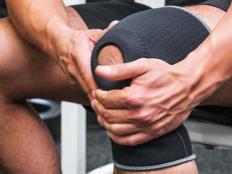
Remember the presidentials? No, not the election. We're talking about the President's Challenge Physical Fitness Test—the series of exercises that gym teachers have been using for decades to torture, er, assess their students.
In fact, gym class may have been the last time you gauged your fitness level. "And that might be what's holding you back," says Mike Robertson, C.S.C.S., co-owner of Indianapolis Fitness and Sports Training. "When you know your strengths and weaknesses, reaching your goals becomes a lot easier—and you achieve them faster."
More: Quiz How Fit Are You?
Sure, the definition of "fit" varies; powerlifters and marathoners have different views. Still, every man should be able to meet certain standards before he can call himself "in shape." And then there's Men's Health Fit. Take these tests to see how you measure up. If you don't clear our admittedly high bar, don't sweat it—we have tips from top experts to help bring you up to speed. (Don't let fitness obstacles deter your training—here are 20 Ways to Stick to Your Workout
1. Jump At Least 8 Feet
The Scorecard:
Men's Health Fit: 8 feet or more
Above Average: 6 to 8 feet
Ordinary: Less than 6 feet
Everyone from strength coaches to drill sergeants uses the standing broad jump to gauge raw power—for good reason: It calls on several muscle groups throughout the body to fire at once.
More: 4 Exercises to Help You Jump Higher
The Test: Stand with your toes on a line and your feet shoulder-width apart. Dip your knees, swing your arms, and jump as far as you can. Have a buddy measure the distance from the starting line to the back of your heels.
Improve Your Power: "Power is a combination of strength and speed, so if you come up short, work on both," says Gentilcore. Start by doing squats and hip thrusts each week in separate workouts. During week one, go heavy with the hip thrusts (3 to 5 sets of five reps using 85 percent of your one repetition maximum) and light with the squats (six sets of two fast reps with 50 percent of your one rep max). The following week, flip the set-rep scheme, going heavy with squats and light with hip thrusts. Continue alternating for 4 to 6 weeks. "To build even more explosiveness, also do three sets of 10 kettlebell swings twice a week," says Gentilcore.
- 1
- of
- 4
Get ACTIVE on the Go


Couch to 5K®
The best way to get new runners off the couch and across the finish line of their first 5K.
Available for iOS | Android






Discuss This Article